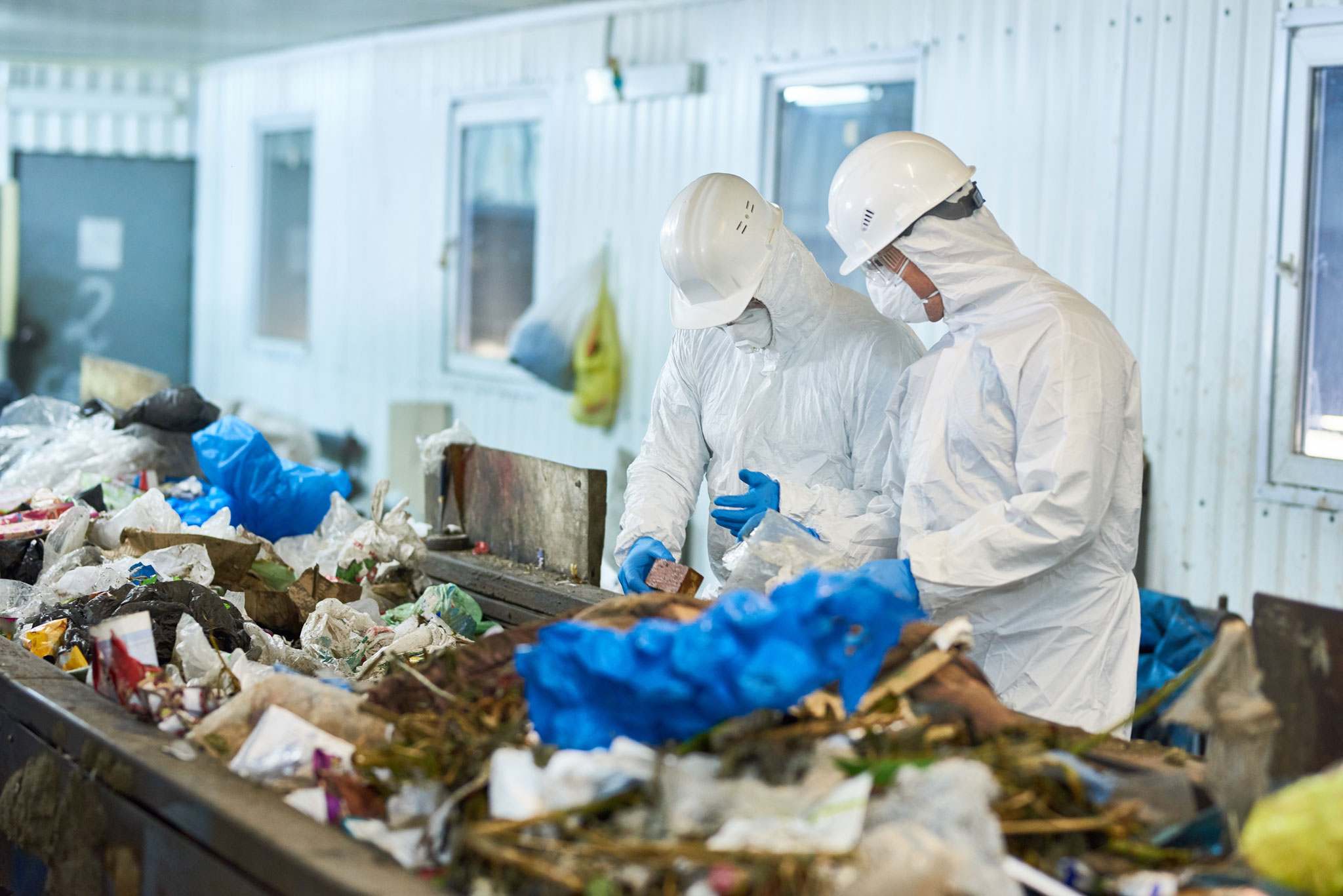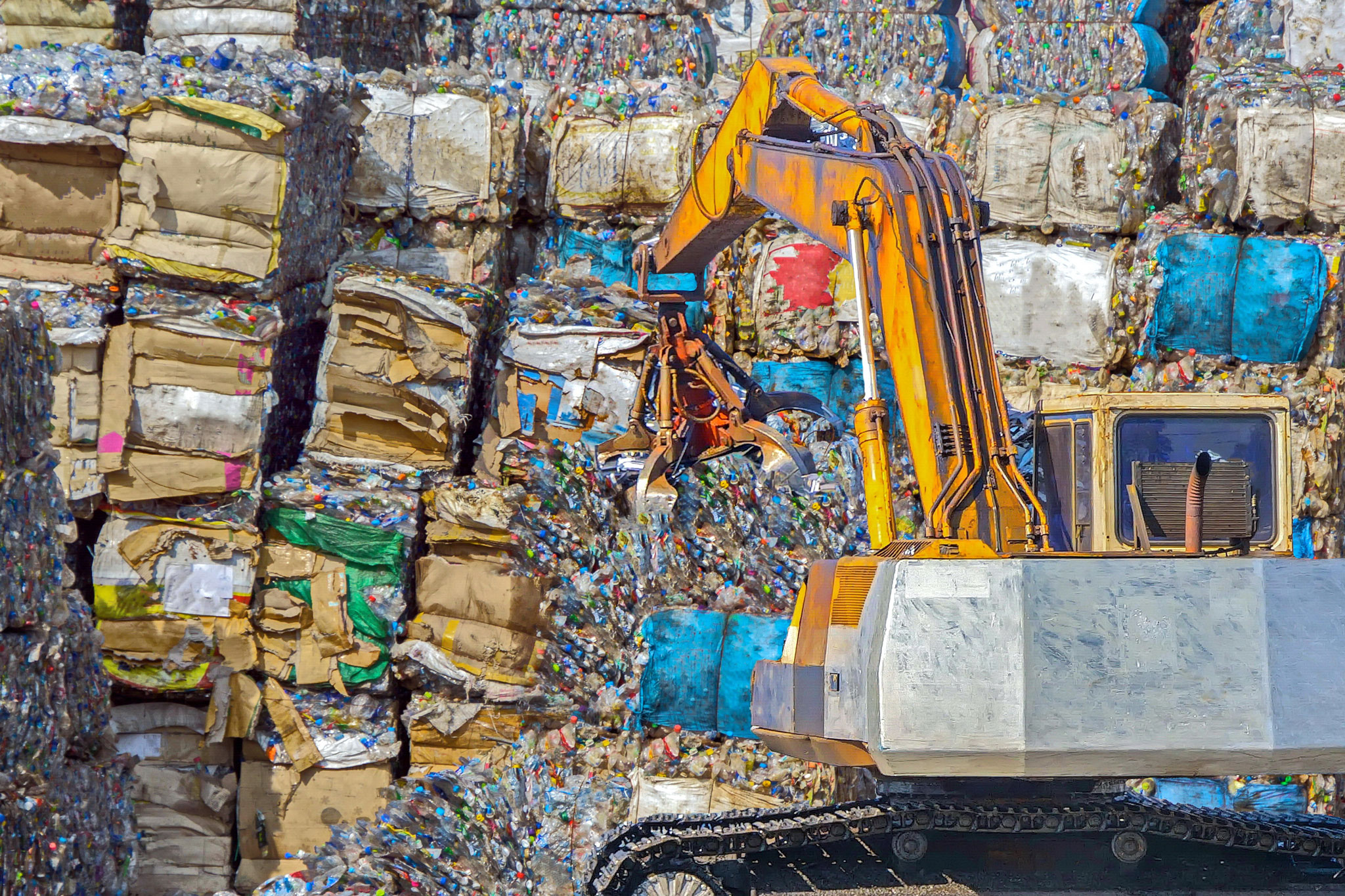Each week, we roll our garbage and recycling bins out to the curb for our local trash company to pick up, carry away and dispose of.
The recycling bin predominantly displays the three circular arrows that are nationally recognized as the symbols for “reduce, reuse, recycle,” as well as a small fading sticker picturing what we can throw in the blue bin and what we can’t.
I have always been slightly confused by the pictures, but I thought I knew well enough what was recyclable. Recently, I discovered that I have been throwing the wrong stuff in the wrong bin for a long time.
Last year, China’s Ministry of Environmental Protection notified the World Trade Organization that, “By the end of 2017, China will forbid the import of four classes, 24 kinds of solid wastes, including plastics waste from living sources, vanadium slag, unsorted waste paper and waste textile materials.”
The statement referred to the substantial amount of solid waste First World countries like the U.S., Australia, the U.K. and Canada collect in curbside and business recycling bins and then export to China for recycling. China cited the detrimental environmental impact of “highly polluted” imported solid waste as its reason as well as the “protection of human health or safety.”
My first question was, “Why is everyone shipping their recycling to China?” This has been a 20-year public secret. In 2016, China processed at least half of the world’s waste plastic, paper and metal. Sixteen million tons of that was from the U.S. We in the First World rely heavily on China to make our garbage go away. China made its decision, and officials don’t appear to be changing their minds.
By their own admittance, some government officials didn’t think much about the statement or consider the impact. The general public was also largely blissfully unaware.
So, when Jan. 1, 2018 finally arrived and China implemented its ban on 24 different recyclables, including post-consumer plastic and mixed paper, an uncalculated crisis hit the First World.
Plastic, cardboard, paper and other recyclables piled up quickly, especially in states like Oregon and Washington that have a stringent recycling program. Waste management companies across the nation, and the world, began to tell clients to not recycle, stopped picking up recycling or quietly threw the contents of the blue, or yellow, bins in the landfills.

Paper and cardboard recycling facilities have filled up with thousands of tons of baled product, where there used to be mere hundreds of tons. Small local municipalities are receiving an education on just how much solid, unrecyclable waste is being produced in their towns. Individuals are finally being told the truth about recycling, about what can be recycled and about where our good intentions have taken us. And there is no foreseeable end in sight to the inevitable pileup.
» A LOOK BACK
The first municipal dump program was established in Athens in 500 B.C. Residents were required by law to personally disposed of their waste at a designated site at least a mile from the city. In 1031, Japan recorded that it re-pulped and recycled its documents and paper into new paper that was then distributed to small local shops around the country.
The real breakthrough came in 1690, when Rittenhouse Mill near Philadelphia in the New World made paper from recycled cotton and linen. From its inception in London in 1865, the Salvation Army has employed unskilled disadvantaged people to collect, sort and recycle unwanted goods, a humble inception of the modern thrift store. And then plastic was invented.
The first synthetic polymer was invented in 1869 as a substitute for ivory, especially for use in the highly popular game of billiards. The discovery was praised as an environment-saving invention. Now humans could create their own materials, rather than strip nature of its wood, metal, stone, bone, tusk and horn.
“Plastics could protect the natural world from the destructive forces of human need,” according to the Science History Institute’s, The History and Future of Plastics.
What we now realize 150 years later is that every piece of plastic ever made still exists in some solid form on the Earth today. That isn’t just milk jugs and water bottles.
That mass includes every plastic toothbrush, light switch plate, shoelace tip, disposable razor, chip bag, toilet seat, phone cover, drink bottle seal wrapper and disposable silverware you, your parents, your grandparents and your great grandparents ever used.
» RECYCLING IN THE U.S.
The first item to truly be recycled in the U.S., in the sense that we understand recycling today, was aluminum. Although Chicago and Cleveland opened the inaugural aluminum recycling plants in 1904, all-aluminum cans, as well as the system to recycle and redeem them, didn’t make it to the market for 60 more years.
Story continues after a quick message from our sponsor below.
Today, the Environmental Protection Agency maintains a list of materials that can be recycled, such as corrugated boxes, paper (26 percent), plastics (13 percent), rubber (9 percent), metals (9 percent), and glass (4 percent). However, out of the 258 million tons of municipal solid waste generated in 2014, it was reported that only 89 million tons of it was recycled or composted, according to the EPA. Until 2018, about one-third of that was exported for processing.
China’s posture toward “yang laji,” or “foreign garbage,” also includes a restriction of 0.5 percent contamination levels in acceptable materials. This is setting a new incredibly high standard for what is considered a “clean” bottle or box in all stages of recycling, and local waste companies are realizing they need to make more effort to educate their customers and crack down on offenders.
» RECYCLE OR TRASH
The international recycling crisis has also brought to the forefront many items that we have thought were perfectly fine to put in our blue bins for years.
Seattle banned plastic straws in the spring of 2018 when reports went viral that they are impossible to recycle and largely responsible for polluting our oceans. When British company Frugalpac launched a recyclable disposable coffee cup, the Frugal Cup at the end of January 2018, coffee drinkers everywhere suddenly realized that to-go paper coffee cups lined with plastic are actually not recyclable.
Through an April 2018 social media rehash of a 2016 article, Florida’s SaltWater Brewery gained recognition for its animal-edible six-pack rings made from barley and wheat ribbons produced by its brewing process.
Although pizza boxes are made of cardboard and often disposed of in the blue bin, they always are redirected to the trash.
The grease and food residue left in used containers like this and yogurt cups is a significant contributing factor to China’s current stance.
» WHAT YOU CAN DO
With a simple click, there is a wealth of information available to us about reducing, reusing and recycling. And for those of us still confused by what we can and can’t throw in our blue bins, please visit recycleoftenrecycleright.com. N
By S. Michal Bennett
As Featured In: 2019 Winter/Spring CDA Edition




2 Comments
Thank you for helping me learn more about recycling. I never knew that most of the world sent their recyclables to China for processing. In general, I hope that the US can find ways to recycle our trash here.
We sure don’t blame China for not wanting dirty, nasty food crusted pizza boxes, etc.
For almost 30 years now, we have been ardent recyclers, block captain at one point, etc.
But now, with single stream pick up in our city, there are good intentions but much confusion about what to discard among our neighbors.
We now feel that metals (like clean steel and aluminum cans and clean cardboard) are the only things worth recycling. They can just put a match to all the other stuff in the short term until they come up with a better solution.